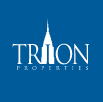Options for Investing
There are a couple of different ways to invest into private real estate. One would be through investing directly into a specific property.
When you do that, you are essentially putting all your eggs in one basket.
Some investors prefer to go that route. They like the idea of being able to drive past their investment and look at the appraisal of their investment.
Another way to invest would be through a fund.
One of the benefits of the fund structure is that it they give investors all the upside of investing into a specific deal, while at the same time mitigating risk by spreading it over a pool of properties—in the case of Trion’s Fund II, approximately 8 to 12 different properties.
The Cross Promote
With this structure, investors buy shares of the fund. For example, the price of our fund is $1,000 a share, and that remains static. The fund is set up as an LLC, so when you invest in our fund, you’re technically purchasing shares of the Trion Multifamily Opportunity Fund II, LLC. Then, over the next 18 to 24 months—give or take—every time we buy a property that fits the parameters of the fund, the fund will be an investor in that property, if it has capital to allocate.
Essentially, you can think of it this way: if you invest in the fund, you own a portion of the fund, and, in turn, the fund owns the properties. Again, it offers further risk mitigation over investing into a specific deal.
In addition to having multiple properties in the fund, a benefit that further protects investors from the downside is that the fund manager’s promote, or carried interest, is crossed over the fund portfolio. This is how Trion’s Fund II is structured.
For example, say you invest in five deals directly, at $50,000 apiece. Four of those deals do extremely well, and one deal—for whatever reason—doesn’t hit its projections, and loses money.
In that same scenario, if you invested the same amount in the fund, and the fund had the same investment positions in those properties, the outcome would be much better for the investor.
This is because, with the fund structure, the manager’s upside on the deals that go well contributes to the alleviation of investor losses on any deals that might go bad. The manager’s upside on those four properties that did well would be used to offset the investor losses in the one deal that went bad.
The way this is referred to in the industry is that the manager’s promote is ‘crossed over’ the pool of properties, as opposed to being tied to each individual property in the fund.
That’s one of the reasons that a fund structure can be extremely beneficial to an investor who may be looking for a $50,000 to $250,000 investment, because it really gives them that mitigation, and downside protection that direct investing in the individual properties would not allow.
At Trion, it is for reasons like this that we have elected to go the fund route, but it is not uncommon for companies to continue to promote individuals deals in isolation of each other.
We have actually been approached by some of our investors, as well as competitors, asking why we would go the fund route, and expose ourselves to that cross-promote—because, essentially, if a deal goes bad, we can’t wash our hands of it. As outlined above, our upside on the deals that did go well goes to alleviate that from any deals that may go poorly.
Our answer is that we see it as a benefit of our investors. Yes, we’ve grown as a company and now have relationships with institutional investors and large family offices that write checks in the multiple millions of dollars. That said, our growth as a company has been very organic, so we know the benefit of putting our investors first on a personal level.
Background
My co-founder here at Trion, Max Sharkansky, and I were childhood friends and we both entered the real estate industry right out of college. Max was a broker at Marcus & Millichap, representing buyers and sellers of apartment buildings, while I was arranging commercial real estate debt at HFF.
We were both successful and decided we wanted to be on the principal side of the business, so we started buying small value-add multi family properties in the San Fernando Valley. Our investor growth has been extremely organic. It started as friends and family, then a few of our coworkers invested with us, and then friends of friends and family members came onboard.
At this point, we have about 360 investors, and the majority of them are high-net-worth investors, who have really been the lifeblood of our growth. Moving to the fund structure was primarily to serve our investor family’s demands for sustained income and capital growth, as well as for risk mitigation during the latter stages of a prolonged economic cycle.
For high-net-worth investors investing anywhere from $50,000 to $500,000, not only do they benefit from diversity across geographical locations subject to varying economic drivers, but also from the mitigation of their risk by using the sponsor fund-level promote as a backstop against losses that may occur in one particular transaction in one particular location.
In Fund II we expect to have upwards of 12 properties spread over as many as 6 major metropolitan areas in the Western states. Having diversity alongside the additional protection of a downside cross-promote backstop provides an additional layer of assurance for investors, whose interests are aligned between them and their sponsor.

